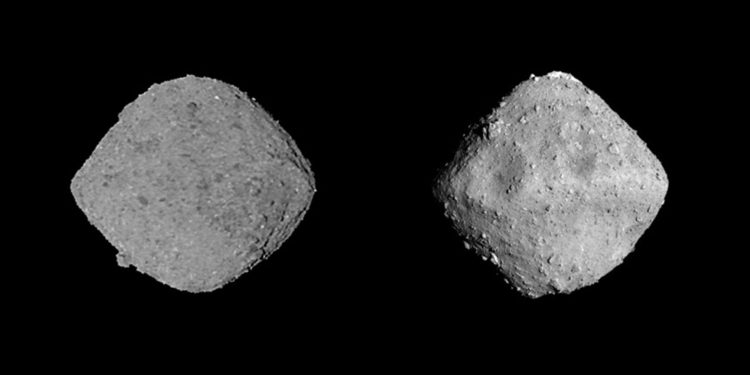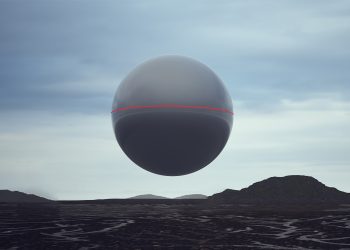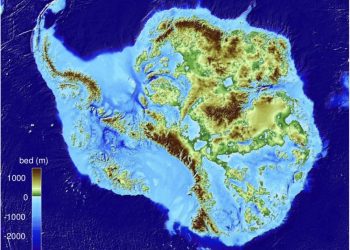New findings have upended previous assumptions about asteroid Ryugu’s journey through space. While it was long believed that Ryugu, a near-Earth asteroid, originated far beyond Saturn’s orbit, fresh research from the Max Planck Institute for Solar System Research (MPS) suggests a closer starting point: near Jupiter. This groundbreaking study, published in Science Advances, reveals key insights that could reshape our understanding of carbon-rich asteroids.
Initial studies indicated that Ryugu might have formed in the distant reaches of the solar system, far beyond Saturn’s orbit. However, the new research paints a more nuanced picture. The researchers found that Ryugu may have been born closer to Jupiter, potentially challenging the long-held belief that carbon-rich asteroids like Ryugu traveled vast distances to reach their current orbits.
This revelation comes after meticulous analysis of Ryugu’s samples, brought to Earth in 2020 by Japan’s Hayabusa 2 mission. Since their arrival, the samples have undergone a series of detailed tests at global research facilities, including isotope analyses at MPS. These studies focused on the ratios of nickel isotopes found in Ryugu, comparing them to those found in typical carbon-rich meteorites.
Nickel Isotopes and Ryugu’s Connection to Meteorites
The results of these tests present an alternative to earlier ideas. Previous theories suggested that Ryugu shared a birthplace with other carbon-rich asteroids in the outer solar system. However, the new findings propose that Ryugu and a rare group of meteorites, known as CI chondrites, may have formed near Jupiter. While both groups share a common region of origin, the processes that formed them likely differed, separated by around two million years.
CI chondrites, named after the Ivuna meteorite discovered in Tanzania, are considered some of the most pristine materials in the solar system, largely due to their chemical composition, which mirrors that of the sun. Only a few samples of these chondrites have been found, making Ryugu’s connection to them particularly intriguing.
Rethinking Asteroid Formation
Traditionally, scientists believed that carbonaceous chondrites, including CI chondrites, formed from three main components: fine-grained rock, round chondrules, and smaller, irregular inclusions. However, Ryugu’s nickel isotope ratios don’t fit neatly into this model. Instead, the MPS researchers propose a new explanation—a fourth ingredient, tiny iron-nickel grains, which must have played a crucial role in Ryugu’s formation.
This discovery suggests that different processes shaped Ryugu and other CI chondrites compared to other carbon-rich asteroids. The findings challenge previous assumptions that carbonaceous chondrites formed in a straightforward, uniform manner. Instead, Ryugu and CI chondrites likely emerged through unique processes, with Ryugu forming later due to the influence of Jupiter’s gravitational pull.
Jupiter’s Role in Asteroid Formation
The new theory places Jupiter at the heart of this complex asteroid formation story. In the early days of the solar system, Jupiter’s gravitational force likely created a barrier that prevented large clumps of material from migrating toward the inner solar system. These clumps accumulated beyond Jupiter’s orbit, eventually forming carbon-rich chondrites. However, as the solar system evolved, different processes took over, leading to the formation of the CI chondrites through the accumulation of dust and iron-nickel grains.
These findings highlight the diversity of processes at play in the formation of asteroids and meteorites, offering a more detailed view of how our solar system evolved. According to the researchers, the discovery of this “missing ingredient” in asteroid formation not only forces us to rethink Ryugu’s origins but also sheds light on the complex history of CI chondrites.
A New Perspective on Carbon-Rich Asteroids
The study’s findings suggest that CI chondrites may not be as distant or exotic as previously thought. Instead, they may be younger siblings of other carbonaceous chondrites, formed in the same region but through different mechanisms. This new understanding of asteroid formation highlights the importance of laboratory studies in uncovering the history of our solar system.
As Dr. Timo Hopp, a co-author of the study, explains, “We previously believed Ryugu formed far from Jupiter. But the evidence from nickel isotopes suggests a much closer origin. This discovery forces us to rethink not just Ryugu’s journey, but the entire CI chondrite group.”
The research underscores the value of continuing asteroid sample-return missions, as each discovery brings us one step closer to understanding the complex processes that shaped our solar system. It also provides new context for studying other near-Earth objects, which may offer additional clues about the early solar system’s evolution.
This latest study offers a fresh perspective on the formation of carbon-rich asteroids, challenging long-held views and emphasizing the critical role of laboratory research. As more asteroid samples are analyzed, we may uncover even more surprises about the history and evolution of our solar system.











